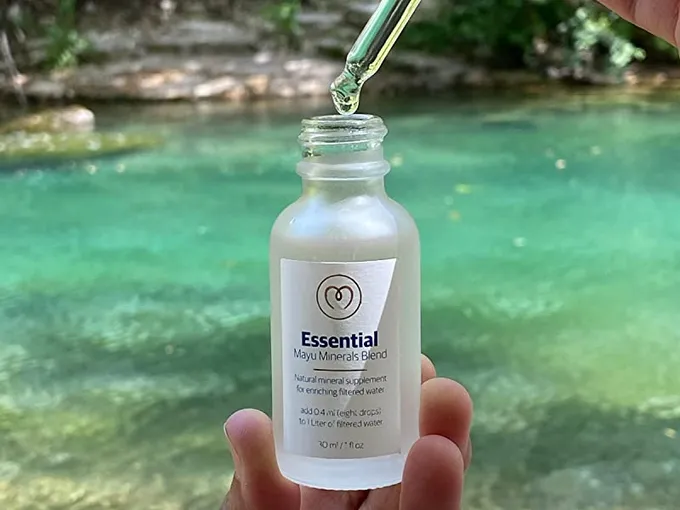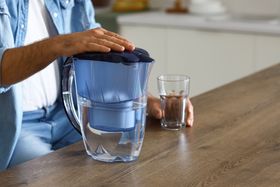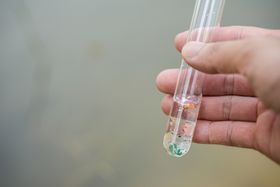4 Health-Boosting Ways to Remineralize Reverse Osmosis Water
Updated March 25, 2024.

The reverse osmosis filtration process effectively removes contaminants that could potentially lead to health implications. However, because this filtration process is so thorough, it also removes all the essential minerals from the water.
Put simply, reverse osmosis water is not considered to be the healthiest water, as it can leach minerals from the body when consumed. Thus, if you do decide to filter your water with reverse osmosis, make sure you add back the minerals for maximum health benefits.
1. Remineralize RO Water With Mineral Drops
2. Add Minerals Naturally Using Salts
3. Install a Remineralizing Water Filter
4. Restore the Minerals Using an Alkaline Pitcher
Essential Minerals That Disappear During Reverse Osmosis
Tap water is usually rich in minerals, and that's not necessarily a bad thing. Minerals are essential for our health and proper bodily functions. They contribute to strong teeth and bones, healthy hair and skin, the growth and development of the body, and optimal neurological functioning.
Not getting enough essential minerals or having them leached from your body, although you're hydrating with reverse osmosis water, disrupts your system's ability to function properly and leads to possible negative consequences.
» Read more about the advantages and disadvantages of RO water
Our Body's Core Minerals and Their Significance
- Calcium: teeth, bones, and the digestive system
- Magnesium: mineralization of the skeleton, heart-disease prevention
- Fluoride: teeth health and strength
- Sodium: blood pressure, muscles and nerves, and electrolyte balance
- Copper: general health maintenance, bone strength, the immune system
- Iron: blood oxygenation
- Zinc: overall development, DNA synthesis, sensory functions, and immunity
So, How Do You Add Minerals to Reverse Osmosis Water?
Using reverse osmosis to clean the water of contaminants should only be half the process. Adding back the minerals is a necessary second step to ensure that you're getting the most out of your drinking water.
Drinking nutrient-rich water is a vital part of a healthy diet, and strong consideration should be given to remineralizing water if it has undergone reverse osmosis. Remember, having minerals in your water is especially beneficial for the heart, one of the most important organs in your body.
1. Remineralize RO Water With Mineral Drops
Mineral drops are a concentrated liquid solution that you drop into your water to increase the mineral content. These drops are considered the quickest and easiest way to replace the essential minerals lost during reverse osmosis. They are also easily absorbed by the body.
Mayu's Essential Blend is extremely efficient as it provides an estimated 60 servings per container and suggests adding 8 drops to every 1 liter of water. It's 100% natural, and its contents are inspired by springs found in nature. Each drop contains 75 essential minerals and other ionic elements, so this supplement is crucial if you use reverse osmosis.
2. Add Minerals Naturally Using Salts
Salt, especially Himalayan salt, contains all the essential trace minerals that reverse osmosis removes from your drinking water. Be careful, however, it's important to use rich mineral salt and not table salt.
This method is also one of the most cost-effective ways of remineralizing your water. You can either add a tiny pinch to every glass of water, or you can add a quarter of a teaspoon to every 4.5 liters of water.
Pros
- Salts provide a natural source of minerals
- Adding minerals using salts is cost-effective
Cons
- Can be challenging to achieve the desired mineral concentration
- Too much salt can result in an unpleasant taste or excessive mineral content
- Choice of salts and their quality can affect the overall taste and quality of the water
» Curious if all water is equal? Read why our experts say it is not
3. Install a Remineralizing Water Filter
This type of filter contains minerals, and as the reverse osmosis water passes over the minerals, they're dissolved back into the water. This happens at the end of the filtering stage, and the pH level and temperature of the water determine how many minerals get dissolved. This is another easy solution since you don’t need to worry about doing any manual work.
A remineralizing water filter can be added to most reverse osmosis systems. If you're not sure, someone who works at a water filter store will be able to help you choose the right water filter.
Pros
- Easy to use
- Provides a steady supply of minerals with each use
- The filter can improve the flavor of RO water
Cons
- Installing requires an initial investment
- The range of minerals may be limited
- Filters need a periodic replacement; otherwise, the effectiveness of remineralization will be affected
4. Restore the Minerals Using an Alkaline Pitcher
An alkaline pitcher adds, filters, and raises the pH level of your reverse osmosis water by adding minerals to it. These essential minerals make the water a bit more alkaline, which means the pH level of the water gets slightly increased. This ensures that the necessary and adequate amount of minerals is added to the water. An alkaline pitcher is an easy way to store your water and will automatically remineralize it.
Pros
- Doesn't require any complex setup
- Some alkaline pitchers can raise the pH of water, potentially providing additional health benefits
- Alkaline pitchers are generally affordable and readily available
Cons
- Alkaline pitchers may not replenish all the essential minerals found in water
- The pH levels may vary, leading to inconsistent results
» Discover natural ways to increase the pH level of water
Is RO Water Remineralization Necessary?
Reverse osmosis water is not bad for you. In some places, it's essential to use a reverse osmosis system, or you may be susceptible to water-borne diseases.
However, it's better to play it safe and remineralize your water, as the minerals in water are essential for a reason. Adding the minerals back to clean reverse osmosis water is a guaranteed way to avoid any harmful contaminants as well as get the minerals vital for your health.
» Give your water a health boost with mineral drops











